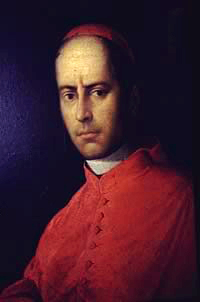
Back Kardinál laik Czech Kardinal awam ID Cardinale laico Italian Cardeal-leigo Portuguese Кардинал-мирянин Russian Кардинал-мирянин Ukrainian 平信徒枢机 Chinese

In the historical practice of the Catholic Church, a lay cardinal was a man whom the pope appointed to the College of Cardinals while still a layman. This appointment carried with it the obligation to be ordained to a clerical order,[1] meaning that "lay cardinal" was not a permanent state, but a term in reference to a man who was appointed cardinal prior to taking on the clerical state corresponding to that appointment.[2]
The current law of the Catholic Church is that a man must be first ordained at least a priest in order to be considered for appointment as a cardinal.[3]
- ^ Cartwright, William Cornwallis (1868). On Papal Conclaves. Edinburgh: Edmonston and Douglas. p. 123.
Laymen were named Cardinals only for twelve months, being bound within that period to take Deacon's orders
- ^ Cartwright, William Cornwallis (1868). On Papal Conclaves. Edinburgh: Edmonston and Douglas. pp. 121–122.
In all these cases, however, it is clear that some orders had been taken; and therefore, in the strict sense of the term, these Cardinals were no longer laymen.
- ^ Code of Canon Law. 1983. Canon 351 §1.
© MMXXIII Rich X Search. We shall prevail. All rights reserved. Rich X Search
